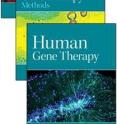CRISPR-based genome editing technologies poised to revolutionize medicine and industry
CRISPR/Cas systems for genome editing have revolutionized biological research over the past three years, and their ability to make targeted changes in DNA sequences in living cells with relative ease and affordability is now being applied to clinical medicine and will have a significant impact on advances in drug and other therapies, agriculture, and food products. The power and promise of this innovation are presented in the Review article "The Bacterial Origins of the CRISPR Genome-Editing Revolution," published in a special issue of Human Gene Therapy, a peer-reviewed journal from Mary Ann Liebert, Inc., publishers. The article is available free on the Human Gene Therapy website until October 15.2015. Erik Sontheimer, University of Massachusetts Medical School, Worcester, and Rodolphe Barrangou, North Carolina State University, Raleigh, describe the origins of this technology, which were derived from DNA sequences found in many bacteria known as clustered, regularly interspaced, short palindromic repeats (CRISPR) regions. These are part of bacteria's protective immune system. They have been developed into genome editing tools comprised of a "hardware" component (an RNA-guided DNA-targeting system that breaks a DNA strand at a specific site, with the help of the Cas protein), and a "software" component that can be programmed, and re-programmed, to repair or replace a faulty gene.
Source: Mary Ann Liebert, Inc./Genetic Engineering News
Articles on the same topic
- Simple technology makes CRISPR gene editing cheaperThu, 23 Jul 2015, 16:37:01 UTC
- New techniques improve specificity of CRISPR/Cas9 genome editing toolsMon, 20 Jul 2015, 16:08:22 UTC
- New resource makes gene editing technology even more user-friendlyFri, 17 Jul 2015, 17:06:30 UTC
- Presidents of National Academy of Medicine and National Academy of Sciences Present new initiative on ethics of human gene editing technologyThu, 16 Jul 2015, 17:05:24 UTC
- New resource makes gene-editing technology even more user friendlyThu, 16 Jul 2015, 14:37:30 UTC
- Troubleshooting the gene targeting processThu, 16 Jul 2015, 14:37:19 UTC
Other sources
- Simple technology makes CRISPR gene editing cheaperfrom Biology News NetThu, 23 Jul 2015, 23:10:04 UTC
- Simple technology makes CRISPR gene editing cheaperfrom Science DailyThu, 23 Jul 2015, 18:30:37 UTC
- Simple technology makes CRISPR gene editing cheaperfrom PhysorgThu, 23 Jul 2015, 17:30:54 UTC
- New techniques improve specificity of CRISPR/Cas9 genome editing toolsfrom PhysorgMon, 20 Jul 2015, 18:00:21 UTC
- CRISPR-based genome editing technologies poised to revolutionize medicine and industryfrom PhysorgMon, 20 Jul 2015, 18:00:19 UTC
- New resource makes gene-editing technology even more user friendlyfrom Biology News NetThu, 16 Jul 2015, 23:30:15 UTC
- New resource makes gene-editing technology even more user-friendlyfrom Science DailyThu, 16 Jul 2015, 14:30:46 UTC
- Troubleshooting the gene targeting processfrom Science DailyMon, 13 Jul 2015, 16:10:15 UTC
- Predictive software can precisely identify most effective ways to target genes with gene editing mechanism CRISPR-Cas9from PhysorgMon, 13 Jul 2015, 15:30:18 UTC
